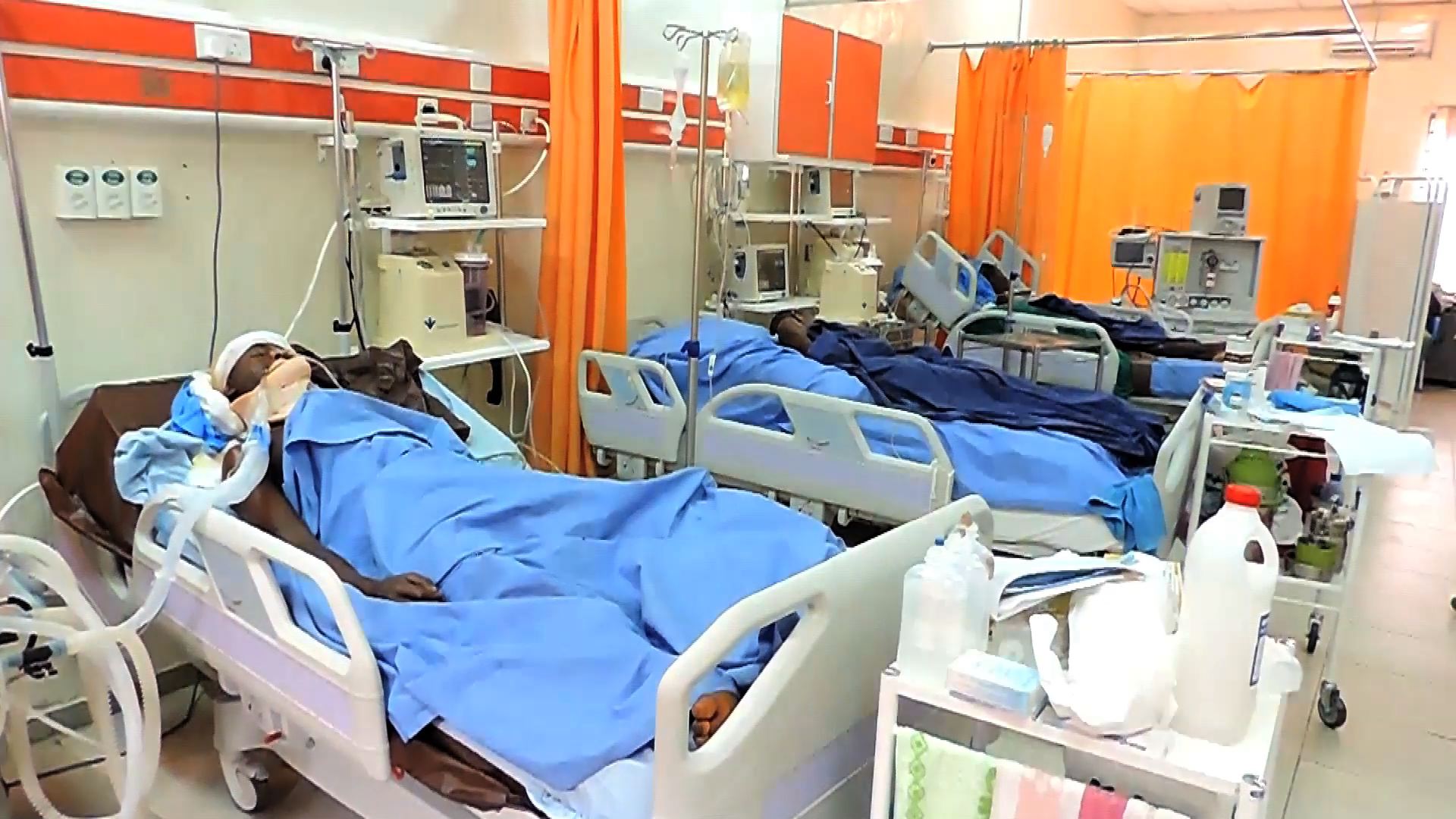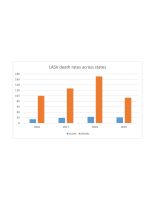Health
Ravages of viral war with no financial ammo
Published
5 years agoon
By
Editor
Nigeria public health emergency response relies largely on foreign boons—no better than the dead meat it tries to save
By Elijah Olusegun
No fewer than 119 people have been killed by hemorrhagic virus of Lassa fever in the last three months. Nigeria health authorities are happy the body count is less than that of 2018 when 171 lives were lost to the fever’s 633 incidents. About 127 of those that came down with the fever in the 308 incidents confirmed in 2017 died. A year before, 100 lives were lost to the outbreak.
Crunching the figures and comparing the percentages, those who always look on the brighter side may find cause for cheers.
But the reality is grim.
The outbreak has just made its highest spread in four years. Twenty-one states have so far recorded the incident since January—up from 14 states in 2016, 19 in 2017, and 23 in 2018, according to data from the Nigeria Centre for Diseases Control’s situation reports. The 2019 report confirmed 119 deaths in 510 cases that tested positive.
While the 2018 episode had the highest yearly figure of contacts, the first quarter of 2019 has recorded 5790 contacts with the infectious disease. And the first quarter’s fatality rate, 23 percent, just falls shy of the annual rates recorded in 2017 and 2018—28.6 percent and 27 percent respectively.
And, worse, Lassa isn’t the only pestilence ravaging Nigeria. Others rear up in their own seasons, too. In all, according to the NCDC, there are 11 epidemic diseases breaking out periodically in Nigeria.
Cerebro-spinal meningitis, cholera, monkey-pox, and others take their own death tolls, too. At least more than 1500 Nigerians died from such vaccine-preventable diseases between 2017 and 2018.
So, probably, there’s little for the NCDC and health authorities to make a song or dance about in the way they control the Lassa outbreak—let alone about a dozen others.

In managing emergencies, preparation matters. And controlling epidemic outbreaks is no exemption. Experts, however, believe Nigeria’s health managers prefer the rapid-fire approach.
Even those in authorities, one way or the other, admit this. Only that they like to put the blame on something less indicting: lacks—of awareness, surveillance, facilities, logistics, staff, resources, amongst others.
But these lacks—of the meat and potatoes of disease control—are all spin-offs of same old problem: unpreparedness.
And it gets worse with poor funding.
Assessment of the Integrated Disease Surveillance and Response (IDSR) some researchers carried out in the WHO–AFRO region revealed mixed challenges with core and support IDSR functions. “Main issues identified include non-sustainable financial resources, lack of co-ordination, inadequate training and turnover of peripheral staff, erratic feedback, inadequate supervision from the next level, weak laboratory capacities coupled with unavailability of job aids (case definitions/reporting formats), and poor availability of communication and transport systems particularly at the periphery,” a body of epidemiologists said in their report.
The NCDC began real development of its own capacity about two years ago—seven years after it was created, and three years after a deadly wave of Ebola epidemic shook the nation in 2014. “One of our biggest criticisms that we have received has been our inability to diagnose specific diseases in Nigeria,” said the Centre’s CEO Chikwe Ihekweasu in an article last year. To diagnose certain diseases, the centre would send samples to laboratories abroad.
That may have stopped now. And the NCDC is willing to punch the air for that score.
“Currently, we have in-country capacity to test for all epidemic prone diseases in the country,” he wrote in an image-burnishing article in 2018. Then he was citing the Abakaliki University Virology Centre added to the National Reference Laboratory in Abuja and the Central Public Health Laboratory in Lagos.
There is also the National Incident Coordination Centre (ICC) for coordinating outbreak preparedness and response activities in Nigeria at NCDC. The centre has begun the roll out of State Public Health Emergency Operations Centres (EOCs). Six states were covered as of 2018, according to Ihekweasu.
But how far can these facilities go in surveillance of over 180 million people sprawling across 770 local government areas in 36 states? And how this achievement stacks up to the expectations from and standard of delivery of an organization that’s about a decade old is also at issue.
From experience so far, most of the NCDC preparation is facilitated by goodwill—what critics call over-dependency on foreign agencies and donors. They are right. Nigeria as a nation still depends largely on the dole to sustain many of its programmes in the health sector. The Global Fund, WHO, Melinda and Bill Gates Foundation, the Department of Virology of the Bernhard-Nocht Institute, UKAid, USAID, and others have all been financial and technical partners with Nigeria in tackling the Lassa virus and other diseases.
Gates Foundation and its partner recently earmarked $12 million for research into a universal vaccine for flu. Nigeria, with its burden of LASV, is definitely one of the major candidates for the fund. The Global Fund, too, has, so far, invested $282 million in Nigeria in the fight against tuberculosis. The United Nations, through the Nigeria Humanitarian Fund,also allocated US$2 million to support the response to a deadly cholera outbreak in Yobe in 2018.
It beggars belief that any emergency response that relies on grants will have a head start when the time comes.
For Nigeria, such over-dependence is not unexpected—just as the outcome, ill-preparation, is not unusual.
Between 2016 and 2018, Nigeria spent N866 billion of its N22 trillion annual budgets on health. Nothing was budgeted for the NCDC. The reason is that it was not a statutory body since it was created in 2011. The bill establishing it was passed into law by the National Assembly just last year. All the while, the centre (known as the CDC-Nigeria) was managed and funded—to the tune of $300 million, about N12 billion—by the US Centre for Diseases Control.
Even if the most populous black nation on earth is just warming up to take responsibility for its disease control, the level of preparedness is not up to scratch.
Nigeria is a signatory to the Abuja Declaration, where African countries committed to slicing 15 percent of their annual budgets for health. The federal government has yet to live up to that commitment. It voted just 4 percent of the N8.6 trillion budget to the sector last year, and that (N340 billion) was the biggest in the last three years budgeted for the health sector. How much of that the health ministry would have allotted to the NCDC could only be imagined.
As the NCDC pats itself on the back for its modest achievement, the strains of microbes spawning these epidemics are waxing drug-resistant by the year. It then requires more efforts to beef up the level of preparedness to control and manage the outbreaks which are now more frequent.
Lassa virus, going by the incident data, gets more virulent in the first quarter of the year, tanking from there through to the last quarter that also witnesses a spike.And the NCDC hoping for donor’s hand-outs to finance its surveillance and other response functions to Lassa fever and other outbreaks smacks of unpreparedness.
That, surely, is a recipe for public health disaster.
Trending

 Football5 days ago
Football5 days agoGuardiola advised to take further action against De Bruyne and Haaland after both players ‘abandoned’ crucial game

 Aviation7 days ago
Aviation7 days agoNCAA suspends three private jet operators for engaging in commercial flights

 Aviation6 days ago
Aviation6 days agoDubai international airport cancels flights as flood ravages runway, UAE

 Featured3 days ago
Featured3 days agoPolice reportedly detain Yahaya Bello’s ADC, other security details

 Comments and Issues5 days ago
Comments and Issues5 days agoNigeria’s Dropping Oil Production and the Return of Subsidy

 Business4 days ago
Business4 days agoMaida, university dons hail Ibietan’s book on cyber politics

 Education4 days ago
Education4 days agoEducation Commissioner monitors ongoing 2024 JAMB UTME in Oyo

 Featured1 week ago
Featured1 week agoRelationship between Oyetola, Omisore remains cordial — Osun APC

